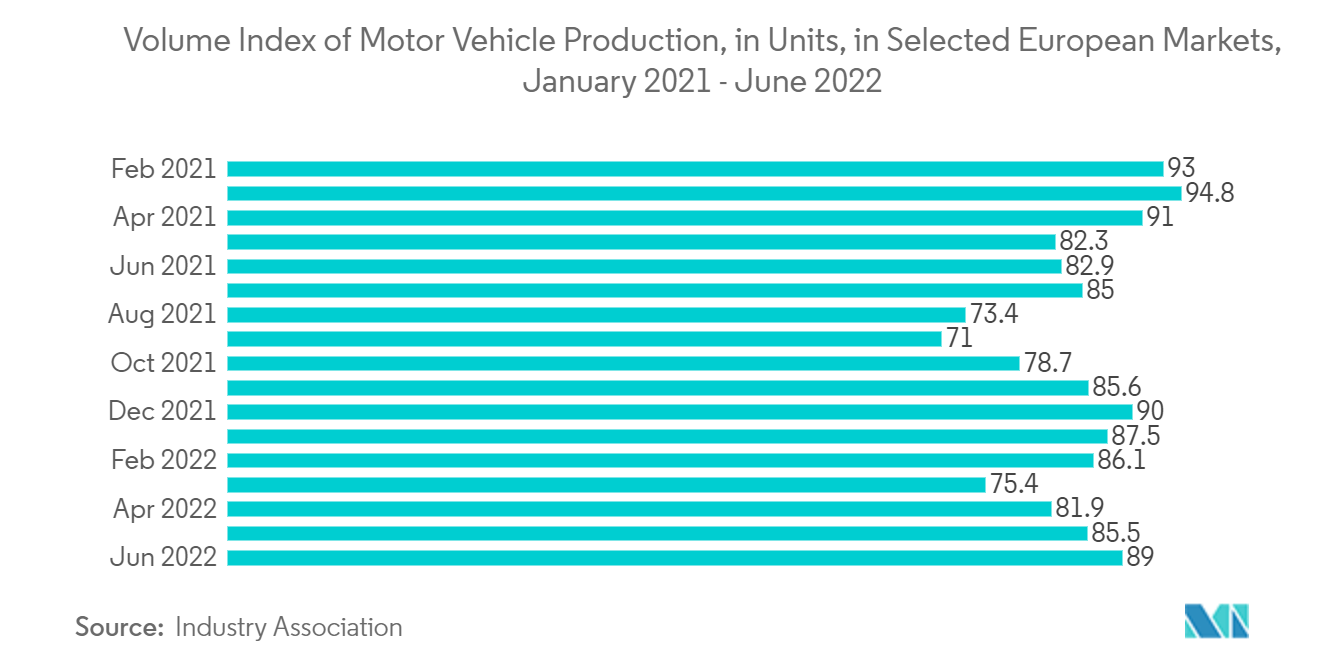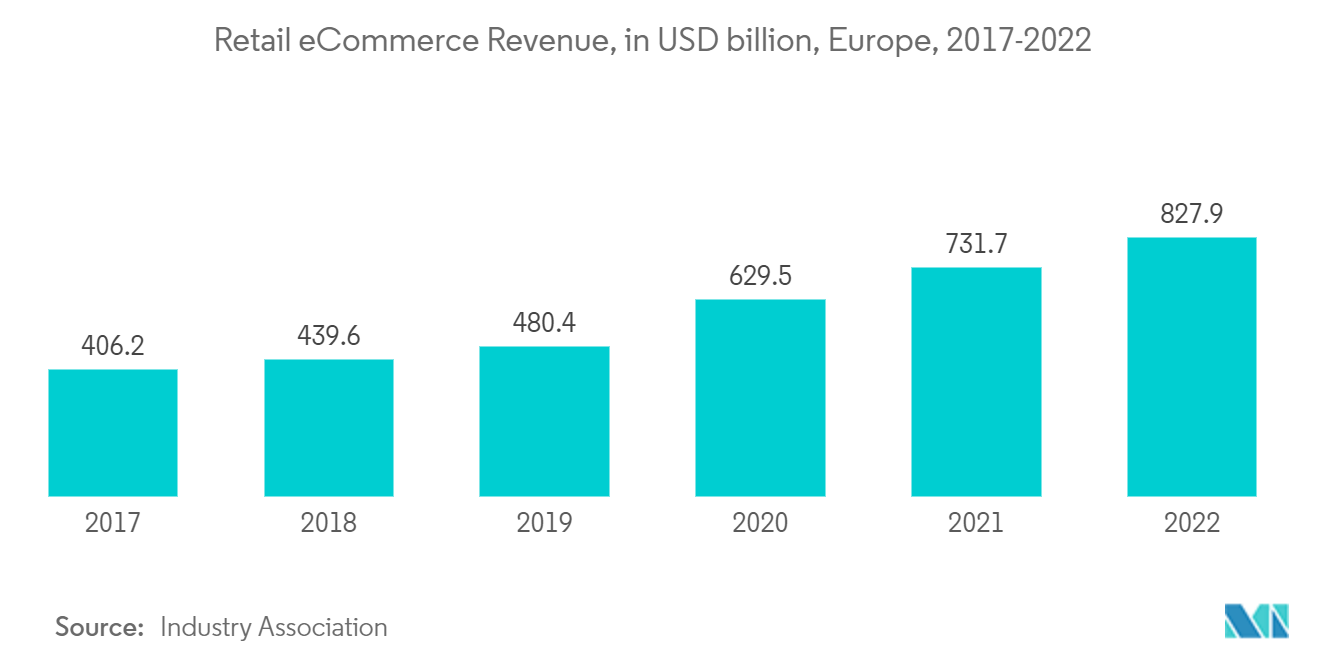Market Trends of Europe Long Haul Transport Industry
Shrinking Automotive Sector May Impact the Market Growth
The European automotive market is particularly hard hit in the first half of 2022. The semiconductor crisis, rising raw material and logistics costs, and now the conflict between Russia and Ukraine conflict combined with other factors are weighing down the automotive industry of Europe each month. In the first quarter of 2022, the European automotive market was down 10.6% compared to the same period in 2021. With the exception of a few countries that were spared, all European countries experienced a significant drop in registrations, and for most of them, it was a double-digit decline. According to ACEA - the European Automobile Manufacturers Association - 844,147 units were sold in March 2022 representing -20.5% compared to March 2021, and even -51% compared to March 2019. Putting aside 2020 and the pandemic-related paralysis of the economies, never before have sales volumes for the month of March been so low and for comparison, the first quarter of 2021 had a dramatic jump of 62.7% compared to the same month in 2020. In the first quarter of 2022, registrations were down 12.3% compared to the first quarter of 2021 with 2,245,976 new passenger vehicles sold.
More globally, with a 2.4% decline in January and 5.4% in February, the entire European market (European Union + United Kingdom, Switzerland, Norway and Iceland) suffered a 20.5% drop in March 2022, with a total of 1,127,077 registrations (a deficit of 260,908 units compared to March 2021). Unsurprisingly, the markets that are the most affected are -39.5% for Sweden - the country with the largest decline, -30.2% for Spain, -29.7% for Italy, -19.5% for France, -17.5% for Germany, and -14.3% for Great Britain. In addition to the crisis related to the shortage of semiconductors, the war in Ukraine and the factory closures aggravate the situation since, Ukraine is the main supplier of wiring harnesses. The war further complicates the delivery problems that had already persisted since the spring of 2021. Because of these various shortages and logistical problems, several European factories have seen their production temporarily interrupted, like some German sites of the Volkswagen group. If this scenario continues, the Europe long haul transport will take a hit as automotive sector is the major end-user of long haul market.

Flourishing eCommerce Sector to Support the Market Growth
In 2021, European e-commerce experienced an increase in B2C turnover, despite some countries reporting lower e-commerce sales due to fewer Covid-19 pandemic measures. For quite some time, Eastern Europe has experienced higher growth rates in B2C e-commerce sales than many Western European countries. However, Western Europe still holds the largest share of total turnover at 63% compared to Eastern Europe's 2%. Europe's Western region remains the leader in terms of B2C e-commerce turnover, accounting for over 60% of total turnover. The E-GDP of the regions reflects this share of turnover, with Western Europe having the highest E-GDP. Although Northern Europe appears to lag behind in terms of share of total European turnover, e-commerce markets are robust, contributing over 4% to total GDP. Even though the digital economy in Eastern Europe continues to grow, it still has a long way to go before it can compete with Western and Southern European markets.
France saw, over the past two years, the digitalization of retailers, particularly SMEs, speeding up considerably. The amount of revenue coming from online really boomed during Covid-19, although the rate of change is now slowing a little bit because we went very high during lockdowns. Germany saw an increasing share of ecommerce in the retail sector, probably following increasing investments during the pandemic. Ireland, on the other hand, saw a rapid shift towards online retail, with Covid-19 a catalyst in accelerating digital adoption and usage. In Luxembourg, the percentage of internet users that bought goods or services online grew by 1% from 2021. In the Netherlands, traditional brick-and-mortar retailers were forced to sell online due to the lockdowns during the Covid-19 pandemic. In the UK, the percentage of the population accessing the internet grew by 1% from 2021. With this massive growth of eCommerce in the region the demand for Long haul transport will continue to rise.


